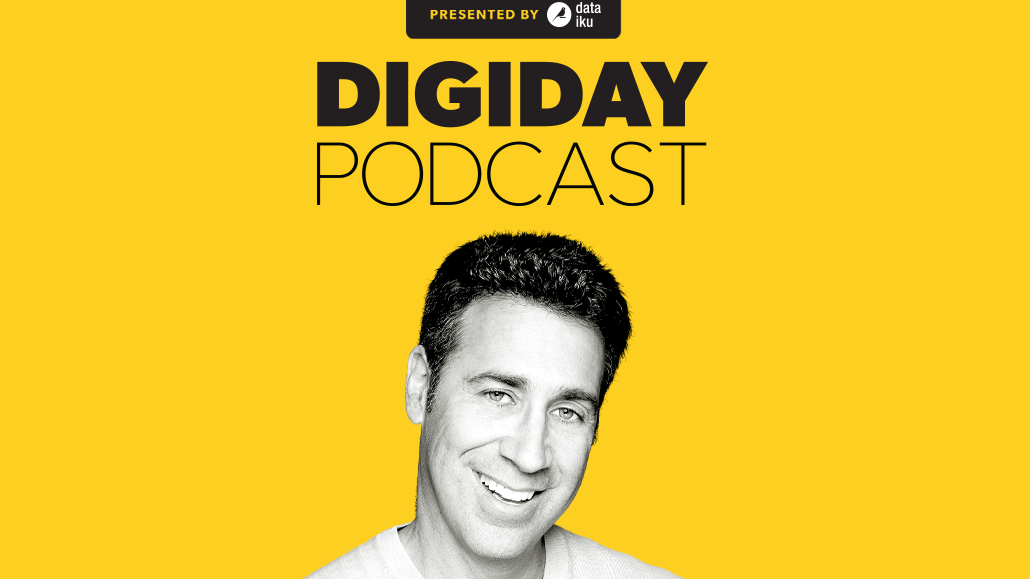Register by Jan 13 to save on passes and connect with marketers from Uber, Bose and more
‘Hell’s Kitchen’ producer Arthur Smith reflects on how production has and hasn’t changed since the pandemic

Subscribe: Apple Podcasts | Stitcher | Google Play | Spotify
In his 40 years of experience in TV production — spanning shows including Fox’s “Hell’s Kitchen,” NBC’s “American Ninja Warrior” and Netflix’s “Floor is Lava” Arthur Smith has seen plenty of changes. Nothing like the past two years, though.
“There was a point between March and July [2020] where we were stuck in neutral. We couldn’t produce anything,” the chairman of A. Smith & Co. Productions said in the latest episode of the Digiday Podcast.
Effectively overnight, six of Smith’s shows that had been slated to go into production that spring were put on ice. “The day that the NBA canceled their season was the day that we were supposed to start shooting [the new season of “American Ninja Warrior”] in Los Angeles. We were all set up, all ready to go — and we canceled it as well,” he said.
As quickly as the entire production industry came to a halt, though, projects soon began to return to production in the summer of 2020, albeit with significant adjustments. Two years later, there remain differences compared to pre-pandemic productions, but they are fewer.
“We’re making shows again, and we’re making shows at the level that we were making them in 2019. We just show two seasons of ‘Hell’s Kitchen,’” said Smith, whose company produced more than 200 hours of programming in the past year. He added, “the amount of production and the types of production [going on today], it is essentially back to normal.”
Here are a few highlights from the conversation, which have been edited for length and clarity.
Producing in a bubble
I was very proud that all six of those shows got back into production as early as July [2020] with “Ninja” being the first of any major network event show to go into production. And we did it differently. We shot in one place. We shot in a dome stadium in St. Louis because all the dome stadiums were available at the time; nothing was happening [with major sports leagues postponing or pausing their seasons]. And we got the show done. We created our own bubble, and it was all very safe.
The return of the in-person audience
The only thing that is different and has evolved is the [live, in-person] audience, having an audience or not having an audience. But now we have them again. “Ninja” this year is back to having an audience, and “Ninja” in July did not have an audience. But we found other ways. We did our massive screens and had the audiences watching at home to give that energy. But that’s the thing that has evolved: getting audiences back.
The continuing role of remote editing
That’s something that’s here to stay, remote editing and the ability to edit in the way that we can now. It has made for opportunities for things to be turned around quicker or things to be done differently. And it’s great for the editors because a lot of them are happy to work from home. It’s probably going to be a hybrid. There are certain situations where the producer really wants to sit in the [editing] bay with the editor and work it through.
The current pitch process
At certain places, you pitch the organization [for companies] who have a streaming service and a network and a bunch of cable networks. It’s a competition show, and it can go on any of those [properties], and you pitch that person, and they cover all of them. And the way certain media companies are set up, you have to pitch different people [inside the company] the same show.
More in Future of TV

‘A year of loose ends’: Digiday editors share top takeaways from 2025
This year was filled with major developments – from Netflix’s planned WBD deal to Omnicom’s acquisition of IPG to Google’s ultimately cookie reversal – and Digiday editors Sara Jerde and Seb Joseph help to recap the year that was (and wasn’t).

Future of TV Briefing: How the future of TV shaped up in 2025
This week’s Future of TV Briefing looks back at the top topics and trends that overtook the TV, streaming and digital video industries in 2025.

Programmatic agency execs speak out on CTV transparency
At the recent Digiday Programmatic Marketing Summit, agency executives spoke out — on stage and in behind-closed-door town hall sessions — on how they see transparency in CTV.








